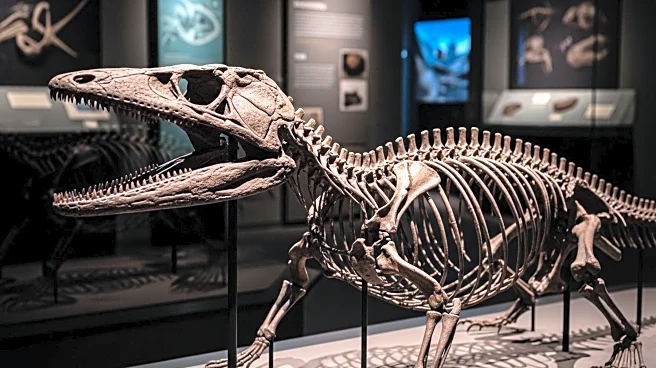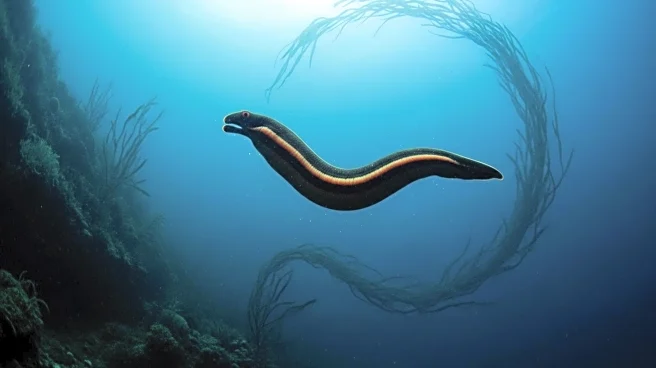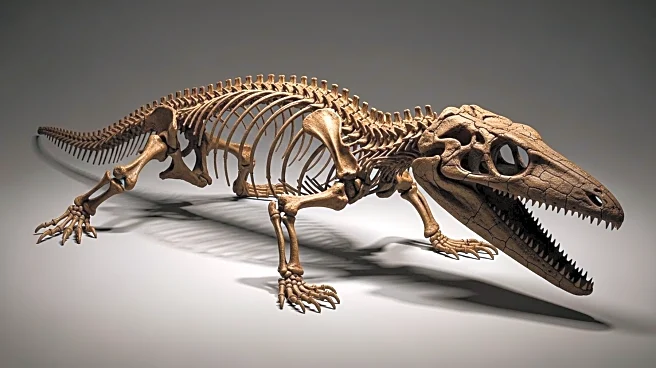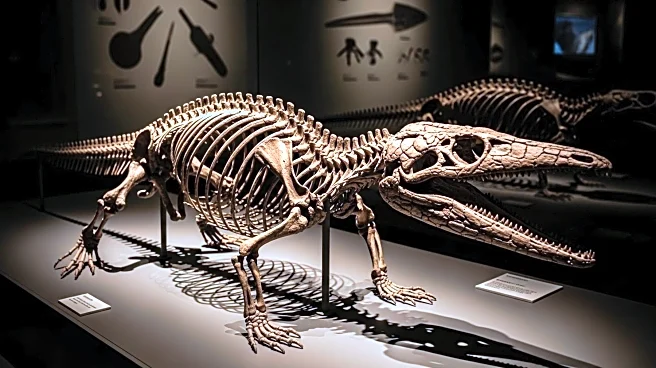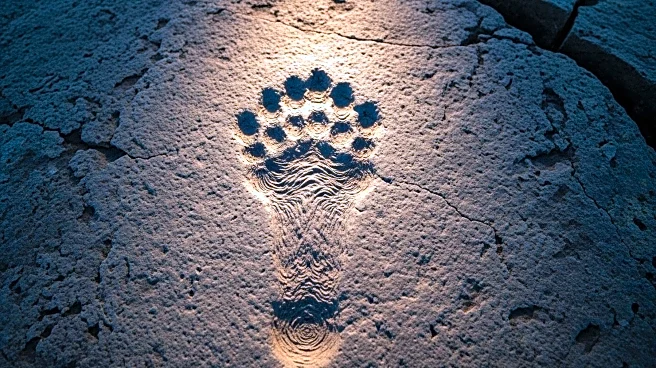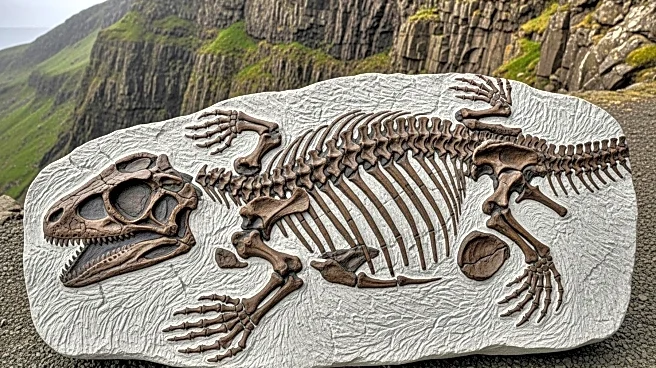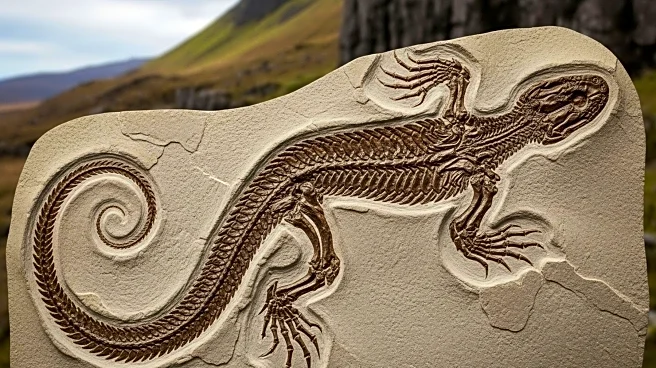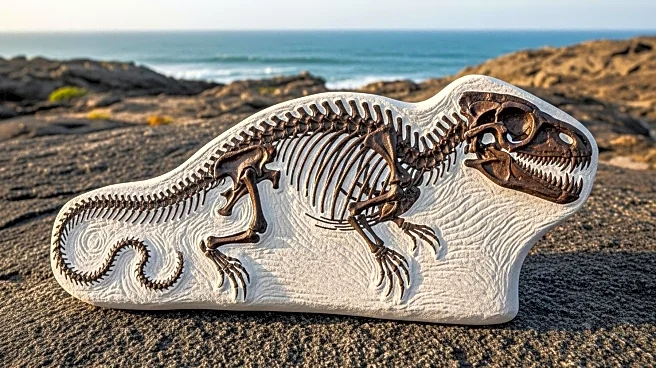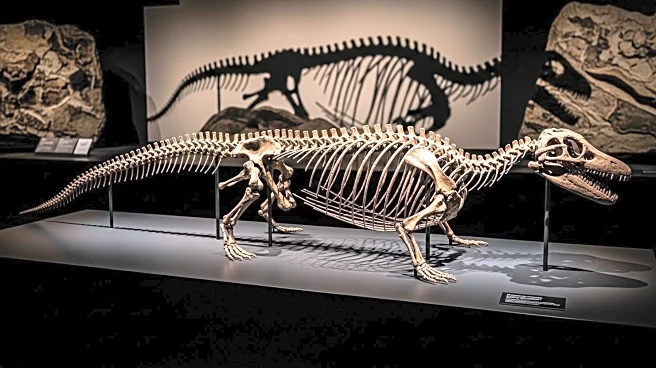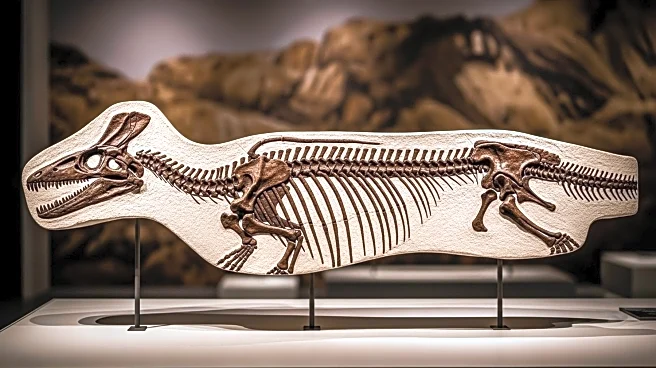What is the story about?
What's Happening?
A multinational team of researchers, including those from the American Museum of Natural History, has discovered a Jurassic-era lizard species with features resembling both snakes and geckos. Named Breugnathair elgolensis, this species was found on the Isle of Skye in Scotland. The lizard, which lived approximately 167 million years ago, exhibits snake-like jaws and teeth, yet retains the body and limbs typical of lizards. This discovery challenges previous assumptions about the evolutionary lineage of snakes and suggests that snake-like predatory traits may have evolved independently in this extinct group.
Why It's Important?
The discovery of Breugnathair elgolensis provides significant insights into the evolutionary history of squamates, the group that includes lizards and snakes. By revealing a combination of primitive and specialized features, this finding could reshape understanding of how snake-like characteristics developed. The research highlights the complexity of evolutionary paths and underscores the importance of fossil records in piecing together the history of life on Earth. This could have broader implications for evolutionary biology and paleontology, potentially influencing how scientists interpret the evolutionary relationships among reptiles.
What's Next?
Further research is needed to determine the exact evolutionary position of Breugnathair elgolensis within the squamate lineage. Scientists may continue to explore other fossil sites for additional evidence that could clarify the evolutionary history of snakes and lizards. The study also opens up new avenues for examining how environmental factors may have influenced the development of predatory traits in ancient reptiles.
AI Generated Content
Do you find this article useful?
